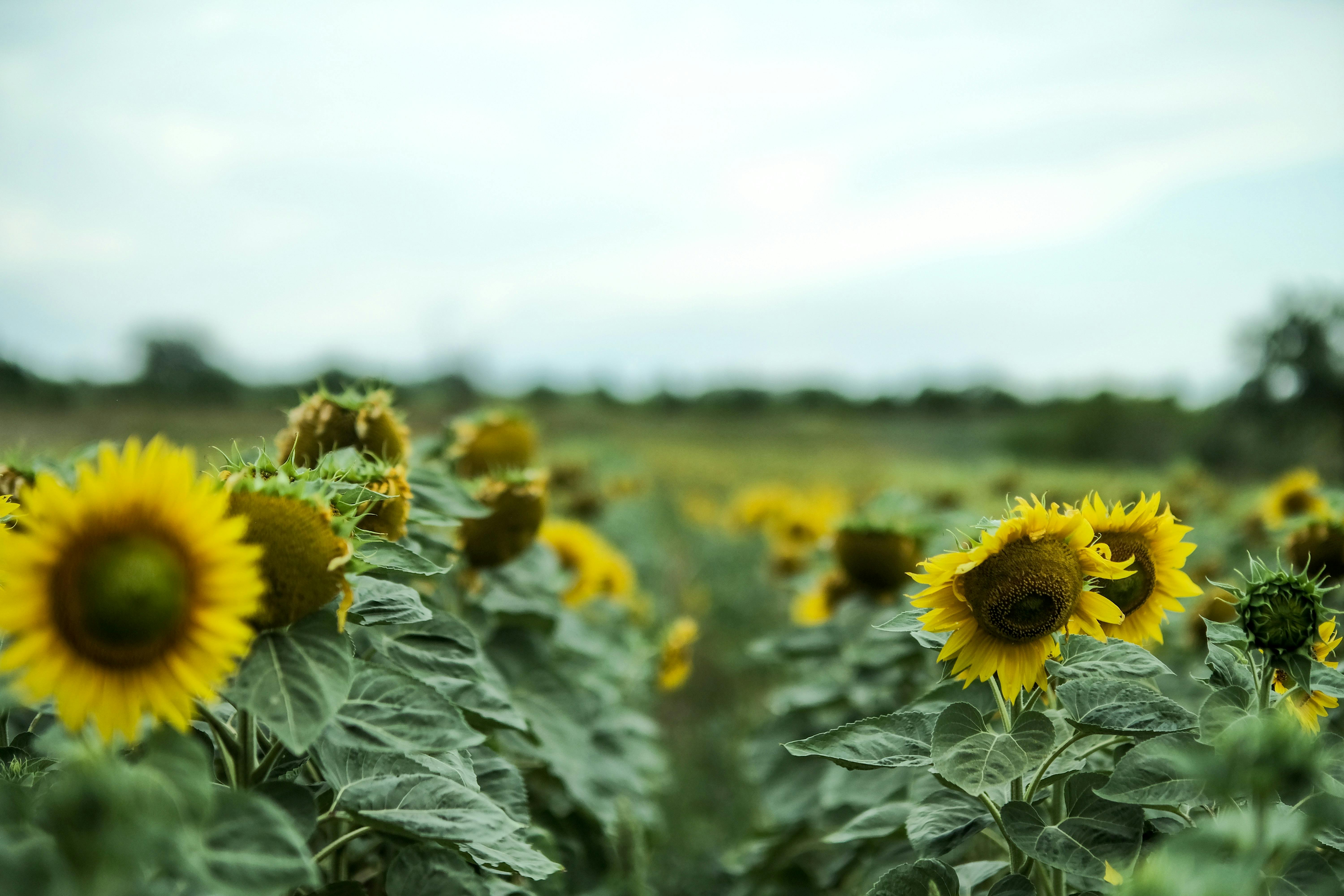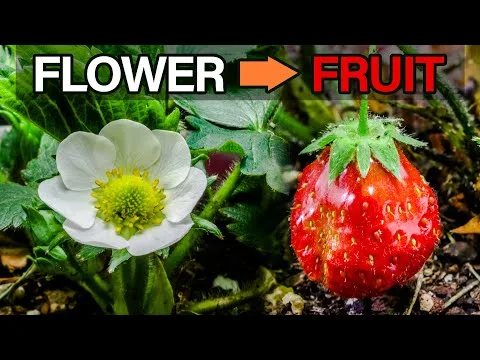Strawberry plants are a popular fruit-bearing plant that is easy to grow and produces a delicious sweet treat. One of the key features of the strawberry plant is that it blooms with beautiful flowers before it grows its sweet berries. In this article, we’ll explore the anatomy of strawberry plants and discuss whether or not they produce flowers.Strawberry plants produce small white flowers with yellow centers. These flowers have five petals and grow in clusters at the end of stems. The flowers eventually give way to the strawberry fruit.
How Long Does It Take for Strawberry Plants to Flower?
Strawberry plants typically begin flowering in the second year after planting. This is because the first year of growth is focused on building an extensive root system. During this time, the plant will produce leaves and runners, but not flowers or fruit. In the second year, when the root system is established, the plant will start flowering and fruiting. Depending on the variety of strawberry plant, flowering can begin as early as April and last until late June or July. For everbearing or day-neutral varieties, flowering can happen multiple times throughout the growing season.
It’s important to note that strawberry plants require a certain number of hours of chill in order to produce a good crop of fruit. Different varieties have different chill requirements, but most need around 500 hours with temperatures below 45°F (7°C) during the winter months in order to break dormancy and induce flowering in spring. If plants don’t get enough chill hours they may still flower, but they won’t set much fruit.
Do All Varieties of Strawberry Plants Have Flowers?
Yes, all varieties of strawberry plants have flowers. These flowers are the key to producing the sweet, juicy berries that make strawberry plants so popular. Strawberries are considered a fruit because they contain small seeds, but technically they are an aggregate accessory fruit because the fleshy part is derived not from the plant’s ovaries but from the receptacle that holds the ovaries. The flowers of strawberry plants can range in color from white to pink and come in a variety of shapes and sizes.
The flowers of strawberry plants can be either male or female, and both types are necessary for pollination and berry production. The female flowers produce tiny green fruits that will eventually grow into berries when pollinated by male flowers. Pollination is best achieved by planting multiple varieties of strawberries in one garden or container, as some varieties will not self-pollinate.
To ensure healthy strawberry plants with high yields it is important to give them plenty of sun and water along with proper soil nutrition, which includes organic matter such as compost or manure and fertilizer if needed. Keeping your strawberry plants free from pests such as slugs or aphids also helps in maintaining healthy plants with plenty of fruits for picking season after season.
Does the Climate Affect Whether or Not Strawberry Plants Have Flowers?
Strawberry plants require certain conditions in order to successfully produce flowers and fruit. The climate plays a major role in whether or not strawberry plants have flowers. Different varieties of strawberry plants may require different levels of sunlight, temperature, humidity, and soil conditions in order to bloom.
In general, strawberries prefer a climate with mild winters and cool summers. Temperatures that are too cold can damage the flowers and prevent them from blooming. Too much heat can also be detrimental to the flowers, causing them to wilt or die off before they have a chance to develop into fruits.
The amount of sunlight a particular variety of strawberry plant needs can also vary. Most varieties need at least 8 hours of direct sunlight each day in order to produce flowers and fruit. If the plant does not get enough sunlight, it can become unhealthy and may not bloom at all.
Humidity is another factor that needs to be taken into consideration when growing strawberry plants. The ideal humidity level for strawberries is between 40-60%. High humidity levels can cause fungal diseases such as powdery mildew which can damage the plant’s leaves and hinder its growth. Low humidity levels can cause dryness which can lead to flower bud drop and poor fruit production.
Finally, soil conditions are important for successful growth of strawberry plants as well. Strawberries prefer fertile soils that are slightly acidic (pH 5-6). Sandy soils should be amended with organic matter such as compost or manure to improve fertility and moisture retention. Soils that are too alkaline (pH 7+) may cause nutrient deficiencies which will lead to poor fruit production or no fruit at all.
In conclusion, the climate plays an important role in whether or not strawberry plants have flowers. Proper temperatures, sunlight exposure, humidity levels, and soil conditions are all necessary for successful growth and flowering of strawberry plants. If any one of these factors is out of balance it can cause problems with flower production which could ultimately lead to reduced yields or no fruit at all!
Requirements for Growing Strawberry Plants With Flowers
Growing strawberry plants with flowers requires a few basic things. Firstly, you need to provide the plants with fertile soil that is well-draining. This will ensure that the strawberries get enough nutrients and water to produce healthy fruit. Additionally, you should add organic matter to the soil such as compost or manure to improve its quality. Secondly, you need to provide adequate sunlight for the plants to grow and produce healthy fruits and flowers. The ideal location should be one that receives at least 6-8 hours of direct sunlight each day. Thirdly, you should water the plants regularly, making sure not to overwater them or let them dry out completely. Lastly, it is important to provide regular fertilization for your strawberry plants in order to keep them healthy and productive.

Benefits of Having Strawberry Plant Flowers
Strawberry plant flowers are a beautiful and fragrant addition to any garden or landscape. Not only do they look great, but they also offer several benefits to their owners. Strawberries are a low-maintenance, resilient crop that can be grown in most climates without much fuss. They are also packed with vitamins and minerals, making them an excellent source of nutrition.
In addition to the edible fruit, the flowers of strawberry plants provide a number of benefits as well. The flowers attract bees and other pollinators which help with pollination and increase yields. The flowers also act as a natural pest repellent, keeping away unwanted bugs that can damage crops.
Strawberries are naturally resistant to many common fungal diseases due to the presence of the flowers. The flowers act as barriers against fungi that can cause disease in other plants, helping to keep your crops healthy and productive.
The flowers also add aesthetic value to gardens and landscapes. Strawberry plant flowers come in a variety of colors from white to pink and even red, adding vibrant pops of color to any outdoor space. Not only does this make your garden look beautiful, but it can also attract beneficial wildlife like birds and butterflies who will help pollinate your plants.
Strawberry plant flowers are easy to care for and provide numerous benefits for gardeners and homeowners alike. Their sweet scent is sure to bring joy to any outdoor space while providing nutrition for you and beneficial insects alike!
Can You Grow Wild Strawberries in Your Garden?
Yes, you can grow wild strawberries in your garden. Wild strawberries are a perennial plant that is native to North America and other parts of the world. They have a sweet flavor and are often used as an ingredient in desserts, jams, and jellies. Growing wild strawberries is relatively easy and can be done with minimal effort.
The best time to plant wild strawberries is in the early spring after the last frost has passed. The soil should be well-drained and rich in organic matter such as compost or manure. It’s important to keep the soil moist but not soggy, so be sure to water your plants regularly. If you live in an area that gets a lot of rain, make sure to provide drainage so that the plants don’t become waterlogged.
Wild strawberry plants spread out through runners and can take over an area if left unchecked. To prevent this from happening, you should thin out the plants every year by removing any excess runners or overcrowded plants. This will ensure that your strawberry patch stays healthy and productive for years to come.
When harvesting wild strawberries, it’s important to pick them when they are fully ripe. The fruit will be soft and juicy when it’s ready to be picked – usually about six weeks after planting. Be sure to wear gloves when harvesting as some people may experience irritation from handling the berries directly with their hands.
Growing wild strawberries can be a rewarding experience for anyone who enjoys gardening or harvesting their own produce from their garden! With just a little bit of effort, you can enjoy delicious wild strawberries all summer long!
Protecting Your Strawberry Plant from Pests and Diseases
Strawberry plants are vulnerable to a range of pests and diseases that can reduce their yield, or even kill the plant. To ensure your strawberry plant has plenty of blooms, it is important to take preventive measures to protect it from these pests and diseases.
The most common pests that attack strawberry plants are aphids, slugs, mites, caterpillars and weevils. Aphids can be controlled by regular spraying with an insecticidal soap or neem oil solution. Slugs can be removed by hand-picking them from the plant or using slug pellets in the soil around the base of the plant. Mites can be controlled by treating the plant with a sulfur-based fungicide. Caterpillars can be controlled with Bacillus thuringiensis (BT), which is a bacteria that kills caterpillars but is harmless to other beneficial insects. Weevils can be prevented by applying diatomaceous earth around the base of the plant.
Strawberry plants are also vulnerable to various fungal and bacterial diseases such as leaf spot, crown rot and anthracnose. To prevent these diseases it is important to keep the area around your strawberry plants free of debris which could harbor disease spores. It is also important to water at the base of your plant so that you do not get water on the leaves which could spread disease spores from one leaf to another on wet leaves. If you notice any signs of disease it is important to remove affected leaves immediately to prevent further spread and spread of spores.
Finally, it is important to provide your strawberry plants with adequate nutrition in order for them to remain healthy and resistant against pests and diseases. Make sure you fertilize your plants regularly with a balanced fertilizer specifically formulated for strawberries, such as an 8-32-16 fertilizer mix or something similar. This will help ensure that your plants have all the necessary nutrients they need for healthy growth and flowering throughout the season.
By taking these preventive measures you will be able to protect your strawberry plant from pests and diseases while ensuring plenty of blooms throughout its growing season!

Conclusion
Yes, strawberry plants do have flowers. Strawberry flowers are small and white, with five petals. They look similar to a rose in shape but much smaller. The flowers develop into strawberries after pollination. Pollination is done by several different methods, including wind, insects and birds.
Strawberry plants require full sun for at least 6 hours a day to produce healthy berries. They also need to be watered regularly to ensure proper growth and development of the flowers and fruit. Fertilizing the soil with nitrogen-rich fertilizer can also help encourage more flower production.
Strawberries are a versatile fruit that can be used in many different recipes or eaten raw as a snack. Whether you’re growing strawberries for your own enjoyment or to sell at a farmer’s market, these delicious fruits will bring plenty of joy to your garden and kitchen!
In conclusion, strawberry plants have beautiful flowers that develop into tasty fruits. With proper care and maintenance, you can enjoy an abundance of sweet strawberries from your garden each season!



